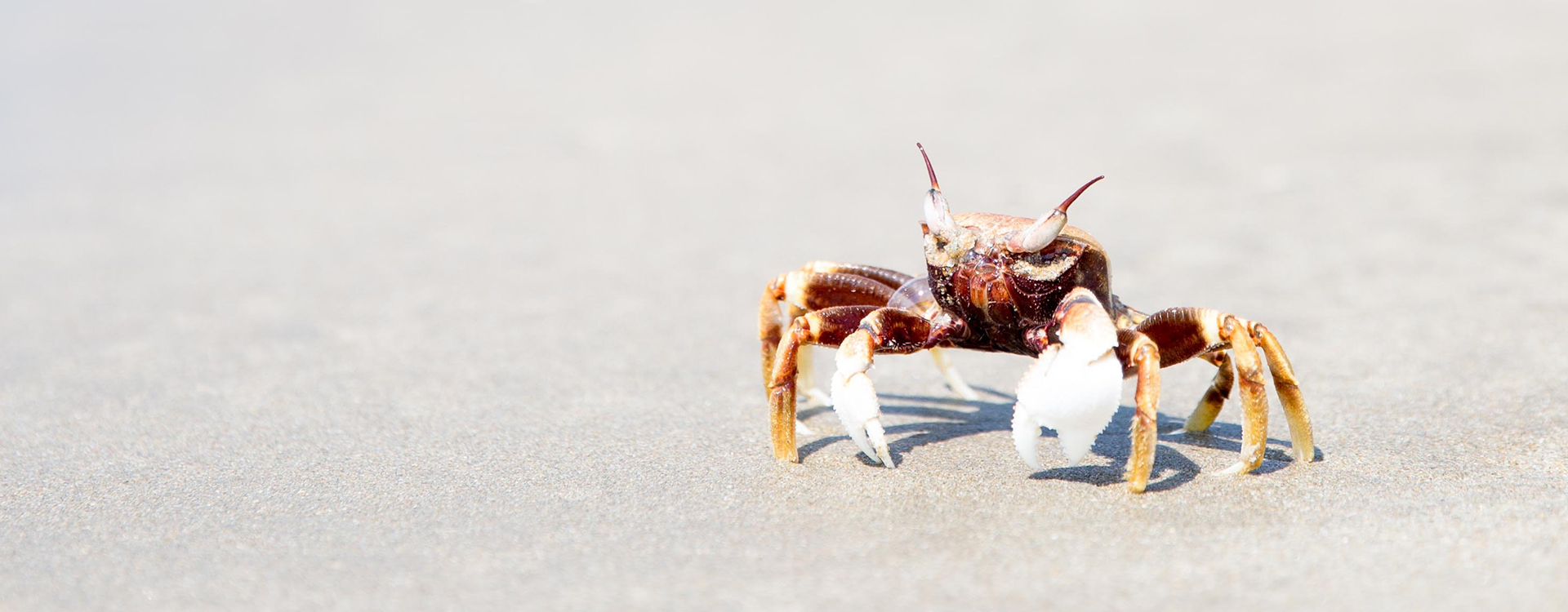Strelishian Gemstone Crab
I take good care of my crabs, treat them like my own kids half the time. And what do some local bastards do? Break down my gate and steal my children to serve up to some rich asshole. The fact they're worth more dead than alive is absurd.Strelishian gemstone crabs are a rare species of crab found only in and around Lake Strelish in central Thurásin. They are both eaten as a delicacy and bred for their unique ability to turn rocks into gemstones.
Characteristics
Gemstone crabs are fairly ordinary as crabs go. They are average in size, and their carapace's colours are a fairly muted range from blues to reds. Small shards of gemstones will sometimes be embedded in their shells, though they will fall out when molting. These gemstones come from the crabs' ability to turn rocks and sand into precious stones. This is because of how they filter the gravel and grit in their stomachs, compacting what they cannot eat and excreting it. This makes them highly sought after, though they are also prized for their tastiness. Gemstone crabs in captivity tend to have a shorter lifespan than those in the wild. This is due to the volume of rocks they can be made to eat, as well as the likelihood that they will be poached from gem farms to be dinner for the rich. If properly looked after, or left alone, a gemstone crab can live for more than 10 years, and it's suspected that some as old as 30 years live deep below the lake's surface.Habitat
The Strelishian gemstone crab is only naturally found in the titular Lake Strelish, and to a lesser extent in its tributary rivers and along the lakeside. Many are also kept in purpose built farms located further 'inland', in large ponds that are turned over with the lake's yearly floods. The super rich occasionally keep the rare crabs in large fish tanks, though they do not last long in that environment.
Lifespan
10 years
Average Weight
800 grams
Average Length
20 centimeters
Geographic Distribution
Gemstones
The type of gemstone produced by the crab depends on many factors, such as temperature of the water and the makeup of the rocks consumed. The most common type of precious stone produced are rubies, sapphires, and small diamonds. Given how much a crab can eat and process in a single day, the amount of stones produced over their lifetime can be worth far more than their weight in gold. This worth, and their rarity overall, unfortunately leads to awful living conditions for many crabs. Poaching is depressingly common, and it isn't unheard of to find a partially compacted gemstone in the stomach of a crab in a restaurant.
Gemstone by Michael Kelly




Poor crabs! D: I feel very sorry for the crab farmer in the top quote. He sounded like he treated his crabs well, at least.